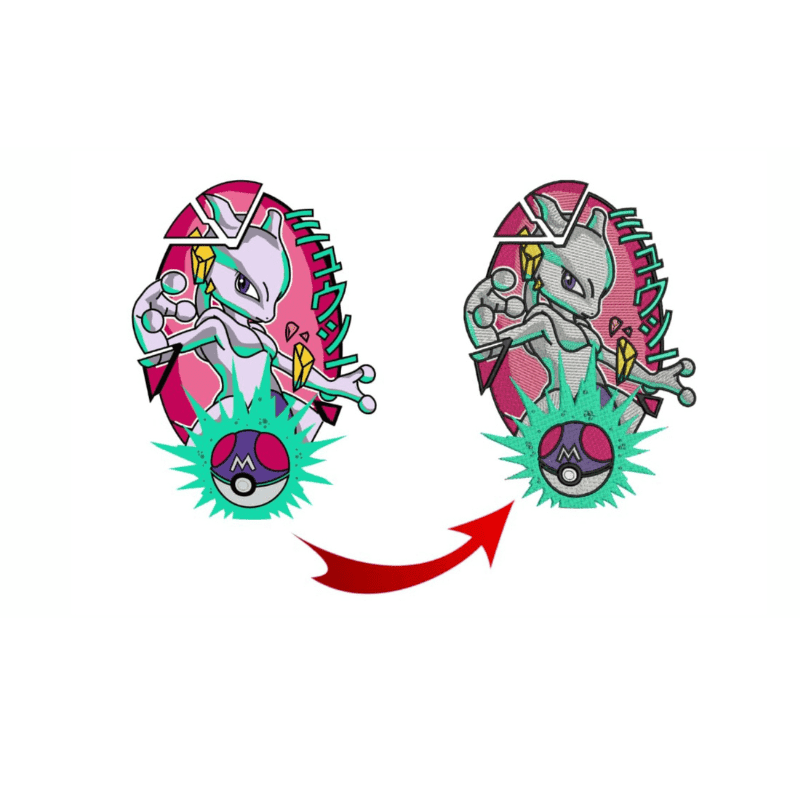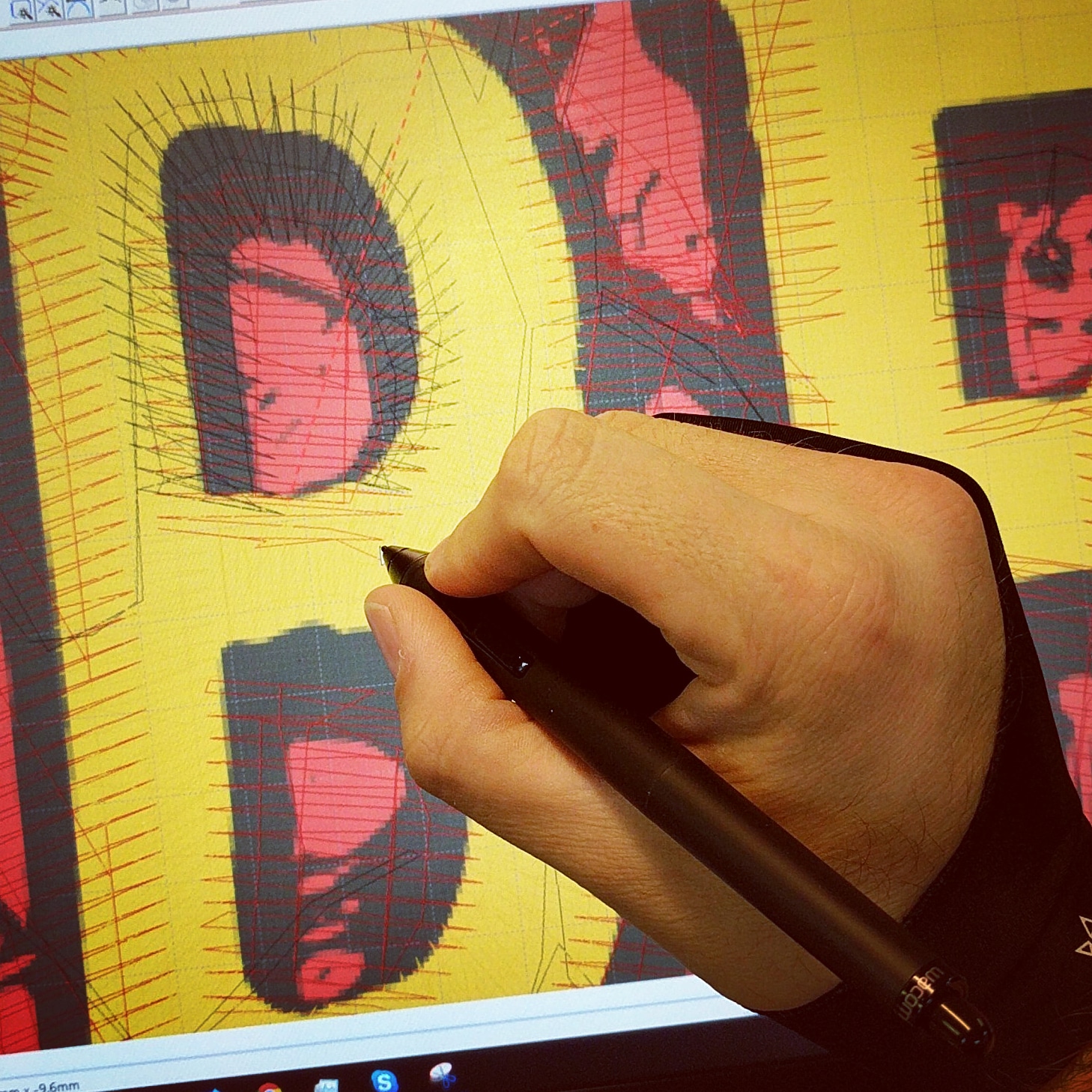High-Quality Digitizing for Embroidery: Expert Workmanship
Understanding the Embroidery Digitizing Refine: Your Ultimate Guide
Needlework digitizing is a precise craft that needs accuracy and competence to translate detailed designs right into electronic styles for maker needlework. As artisans begin on this journey to master the needlework digitizing procedure, a thorough understanding of the essentials establishes the foundation for excellence.

Comprehending Embroidery Digitizing Fundamentals
Embroidery digitizing basics form the foundation upon which detailed layouts are converted right into machine-readable layouts for precise stitching. This preliminary action in the needlework digitizing procedure is crucial for guaranteeing that the last embroidered product is a devoted depiction of the initial layout. Comprehending needlework digitizing essentials involves comprehending crucial principles such as stitch kinds, sew direction, density, rug, and draw settlement.
Stitch types play a vital role in establishing the aesthetic and textural result of the embroidered design. By selecting the ideal stitch kind, whether it be satin, fill, or running stitch, digitizers can accomplish the preferred effect and boost the total high quality of the embroidery. In addition, sew direction influences the flow and dimension of the design, while density determines the spacing and protection of the stitches.
In addition, underlay stitching gives security to the design by protecting the fabric and stopping distortion during the needlework process. Draw compensation is an additional essential factor to consider to counteract the all-natural tendency of textile to contract when stitched. Grasping these embroidery digitizing fundamentals is fundamental for producing professional-quality stitched products.
Choosing the Right Digitizing Software Application
Picking the appropriate digitizing software application is a crucial choice that significantly affects the performance and quality of the embroidery digitizing procedure. Digitizing for Embroidery. When choosing the right digitizing software application, it is vital to think about elements such as the intricacy of layouts you intend to produce, the user-friendliness of the software program, the level of client assistance provided, and the compatibility with your embroidery machine
There are numerous digitizing software choices readily available out there, ranging from basic programs for newbies to advanced software application for professional digitizers. Some prominent choices consist of Wilcom EmbroideryStudio, Hatch Embroidery Software Program, and PulseID. These software offer a large range of tools and attributes to aid you produce elaborate styles with simplicity.
Before deciding, it is recommended to explore the different software program alternatives with complimentary trials or demos to establish which one ideal matches your check here demands. Furthermore, checking out reviews and seeking recommendations from experienced digitizers can provide important insights right into the toughness and weaknesses of each software bundle (Digitizing for Embroidery). By carefully assessing your requirements and comparing the functions of various digitizing software program, you can make an informed selection that boosts your embroidery digitizing process
Digitizing Tools and Methods

Optimizing Design Setup for Embroidery
Mastering the details of design settings is basic in attaining optimum lead to the embroidery digitizing process, building upon the foundation laid by understanding digitizing tools and strategies. When maximizing style settings for embroidery, it is necessary to consider factors such as stitch kind, thickness, padding, pull compensation, and enrollment. Sew type option affects the total feel and look of the style, with alternatives like satin, fill, and running stitches supplying various appearances and results. Thickness describes the spacing and thickness of stitches, impacting the style's coverage and toughness. Correct padding sewing supplies security and avoids textile distortion, particularly for intricate designs or on elastic products. Draw settlement changes for fabric stretch during stitching, ensuring accurate layout duplication. Enrollment settings line up different components of the layout accurately, keeping total design integrity. By fine-tuning these design settings, embroiderers can enhance the top quality and precision of their stitched developments.

Troubleshooting Common Digitizing Issues
When encountering typical digitizing concerns during the embroidery procedure, it is vital to recognize the root triggers check and apply efficient options promptly. One typical trouble is stitch density issues, where stitches might be also dense, causing the material to tighten, or too sporadic, causing voids in the design. Changing the stitch thickness setups in the digitizing software can assist solve this concern.
Another regular obstacle is string breaks throughout the embroidery procedure. This can take place due to various factors such as wrong tension click to read settings, boring needles, or making use of low-quality thread. Making sure correct maintenance of the embroidery device, consisting of normal needle changes and tension modifications, can decrease the occurrence of thread breaks.
Additionally, design enrollment mistakes can result in misaligned aspects within the needlework layout. Checking the style alignment in the digitizing software application and making required modifications prior to sewing can aid in preventing this problem. By resolving these common digitizing problems immediately and properly, you can guarantee a smoother embroidery process and top notch ended up items.
Verdict
To conclude, understanding the needlework digitizing procedure calls for a strong understanding of the essentials, the appropriate selection of software program, and expertise of devices and strategies. Enhancing design settings and repairing usual digitizing problems are vital action in making sure top notch embroidery results. By following these steps vigilantly, one can accomplish precision and efficiency in the digitizing procedure.